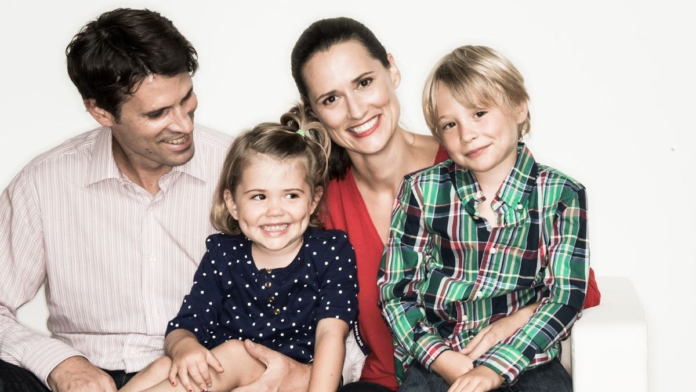For Leslie and Mark Begert, raising bilingual children in a predominantly English-speaking culture presented a challenge that many parents face: how to make language learning natural, engaging, and effective. Their solution? FabuLingua Inc., a scientifically backed method that turns storytelling into an immersive language-learning experience, making the process intuitive, stress-free, and engaging.
Leslie’s multilingual upbringing gave her a deep appreciation for the power of language to open doors. Raised in Spain by Venezuelan-American and Norwegian parents, she went on to study Psychology and Social Anthropology at esteemed Universities in the UK. Along the way, she learned French and Mandarin and lived in Paris, Shanghai, and Buenos Aires. It was her move to Austin, Texas, that sparked the idea to draw on her academic background to research, create, and patent a better way for children to learn second languages.
But when Leslie and her husband, Mark, sought to pass this gift onto their own children, they encountered an unexpected roadblock. Their son resisted Spanish, becoming visibly uncomfortable when asked to respond in the language. The experience was disheartening, finding effective resources scarce—until Leslie had a realization.
Rather than force the language on him, she turned to something all children love: stories. She began reading Spanish books while providing live translations in English, allowing her son to engage with the plot without feeling overwhelmed. Over time, she gradually reduced the English translation, allowing Spanish to take center stage. By the time he was four, he could read Spanish stories to her with perfect pronunciation.
Leslie recalls a moment when her son’s Spanish teacher was astonished at his fluency. “She assumed we spoke Spanish at home full-time, but in reality, I was only reading to him once or twice a week. That’s when I realized how effective this method was,” Leslie shares.
Leslie’s accidental discovery aligned with the lines of a renowned linguist. His theory underscores that the more comprehensible language input a learner receives, the faster they acquire a language.
This insight became the foundation of FabuLingua’s Magical TranslationsⓇ method. Unlike traditional bilingual books, which print side-by-side translations that learners can rely on as a crutch, FabuLingua’s approach is purely auditory. During the first read-through, children hear gentle translations, making the story understandable. But in subsequent reads, the translations are removed, leaving only the target language.
“By making stories comprehensible the first time, children engage naturally, without stress or frustration,” Leslie explains. “And because stories introduce a richer vocabulary than everyday conversation, kids absorb the language at a much deeper level.”
FabuLingua’s choice to center language learning around storytelling resonates with the cognitive science that narrative-based learning enhances memory retention by connecting language to emotions, context, and visual cues. The app’s interactive design incorporates native speaker narration, gamified rewards, and touch-based engagement, reinforcing comprehension and pronunciation in an organic way.
“Storytelling is one of the most powerful ways to learn,” says Mark. “It’s how children naturally absorb information, and it keeps them emotionally invested. Instead of drilling vocabulary lists, they learn the language as part of a meaningful experience.”
The method also respects the silent period—a natural stage in language learning where children absorb input before feeling comfortable producing output. Unlike traditional language classes that pressure students to speak before they are ready, FabuLingua allows children to engage at their own pace, reducing anxiety and improving long-term retention.
As FabuLingua continues to grow, the Begerts are committed to expanding its library of stories, incorporating new languages, and refining its technology to make language learning even more immersive. With AI-driven advancements, personalized learning pathways, and new storytelling formats, the app is poised to revolutionize children’s language education.
FabuLingua is already beloved in both home and school settings. “It’s a game-changer in Spanish classrooms and other learning environments! It is miles beyond anything I’ve encountered in this arena,” says a K-5 Spanish teacher.
“We want to make learning a new language as effortless and fun as playing a game or listening to a bedtime story,” Leslie says. “If we can create a world where children embrace languages through stories, we’re not just teaching words—we’re opening up entire worlds.”






